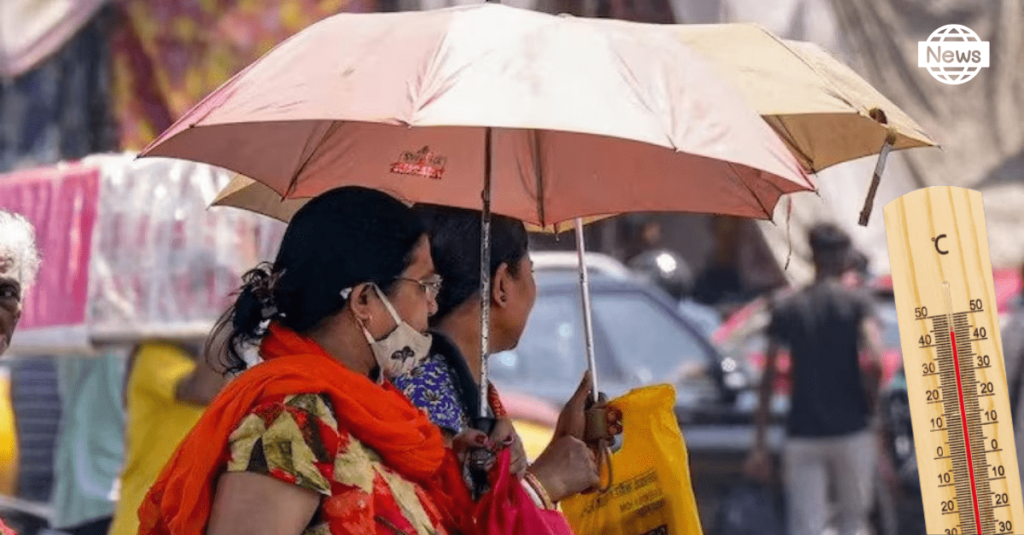An orange alert is issued by the weather department due to severe high temperatures in three states: West Bengal, Bihar, and Andhra Pradesh. Similar heat waves may be felt in states like Sikkim, Jharkhand, Odisha, and Uttar Pradesh. This summer could be more severe than usual across the country.
The hottest place in India on Monday was Jayashankar Bhupalpalli district in Telangana with a record of highest temperature of 44.6 degrees and Sultanpur in Uttar Pradesh followed the same with a temperature record at 43.4 degree Celsius.
On Tuesday the Meteorological Department stated that western disturbances can lead to relief from the rising temperatures in some parts of India such as, Jammu & Kashmir, Himachal Pradesh, and Punjab.
Punjab and Haryana recorded similar heatwaves and are expected to continue the same on Tuesday as well.
The implication behind the orange alert is heat illness due to high temperatures in people who are exposed to the sun for a long period of time or in people who are doing heavy work.
The alert was issued as the reaction to the death of 13 people at a Maharashtra Government event who sat for several hours in the open area.
Vulnerable people who are at high risk during heat waves are infants, old age groups, and people suffering from chronic diseases. According to IMD, the recommended preventive measures include drinking enough water irrespective of feeling thirsty, drinking ORS(oral rehydration solutions or electrolyte replenishments), or similar homemade drinks to keep yourself hydrated.
Director General of IMD, M Mohapatra said that the blowing of winds from the eastern sides or the direction of the Bay of Bengal carries clouds at times which brings down the temperatures in the eastern states. But, the winds of the north blowing over east India are comparatively humid due to their locations. So people of eastern states are recommended to take adequate heat preventive measures.
Mohapatra added that heat wave conditions are not only because of high temperatures but also due to high humidity. Humidity is comparatively high in coasted states even though there are similar ranges of temperatures. This is the reason from this season onwards forecasts on humidity will also be announced.
Humidity limits one’s ability to cool down as relatively moist weather prevents sweat from evaporating. Such temperatures are also termed high wet bulb temperatures and currently IMD does not provide them.
According to Mahesh Palawat, vice president, of climate and meteorology at Skymet Weather, “Temperatures are very high over east India but humidity is still relatively low compared to June and July and because winds are from the northwest direction. Still, the relative humidity levels we are seeing can also lead to discomfort and heat stress. They can be severe or fatal when winds approach from the east and similar temperatures prevail.”
For instance, the maximum temperature at Asansol was 43°C with a relative humidity of 47% at 8.30 am; Angul recorded 43.1°C with an RH of 74% at 8.30 am and Bolangir recorded 43°C with an RH of 78%. Kolkata recorded a maximum of 41.6°C with RH of 52% at 8.30 am.
The high humidity levels would have reduced when the maximum temperatures are recorded and hence are bearable as per Palawat. Sikkim which is positioned at a high altitude has recorded heatwave conditions.
Heatwave conditions are announced when the maximum temperature is over 40 degrees Celsius over the plains, over 37 degrees in the coastal areas, and over 30 degrees in the hilly regions and the deviation from normal is between 4.5 and 6.4 degrees above the average maximum. If the stated conditions persist for two consecutive days, a heat wave is declared on the second day.
Experts suggest that this year there have been drastic changes in weather conditions and it is unusual.
Sandeepan Mukherjee, a weather scientist at GB Pant National Institute of Himalayan Environment and Sustainable Development in Almora asked about the weather trend in the ranges and claimed that there are changes in the weather pattern as sow season is now extending till April first week and then sudden rise in temperature by mid-April.
On Sunday, maximum temperatures recorded in some parts of plains of northwest India, central and east India were in the range of 40-42 degrees Celsius and 35-40 degrees over many parts of the rest of the country except over Western Himalayan Region where the temperature was recorded 22-25 degrees.
Maximum temperatures were recorded above normal by 3-5 degrees Celsius in many parts of east and northeast India. Heatwave conditions have been recorded over Gangetic West Bengal for the last six days; coastal Andhra Pradesh for four days and Bihar for three days.
